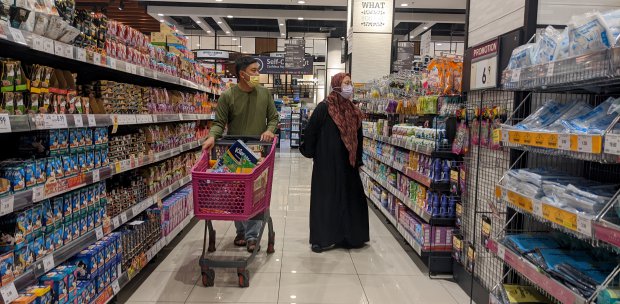LETTERS: The surge in prices of commodities and intermediate products, especially those linked to agriculture, has resulted in a higher producer price index (PPI).
PPI measures the average changes in prices received by domestic producers for their output.
As of early June, Bank Negara Malaysia (BNM) reported that the PPI and consumer price index (CPI) had increased by 11.2 and 3.6 per cent respectively.
This shows that producers are absorbing the higher cost of production, which has dampened their cash flow.
Eventually, producers will transfer rising costs to consumers by increasing the prices of goods and services.
This is inevitable if the government has not taken steps to mitigate the increasing cost of production, i.e. controlling the supply side of inflation.
PPI is a strong indicator for the CPI, especially when inflation is due to supply-push rather than demand-pull inflation.
BNM reported that the main contributors to higher PPI were the mining sector at 20.6 per cent, followed by agriculture, forestry and fishing at 11.6 per cent.
The ballooning cost of processing crude and intermediate materials, supplies and components had contributed to higher prices of food products by approximately 5.2 per cent.
In spite of short-term measures to prevent inflation from accelerating, the solution lies in medium-term and long-term policies.
Nevertheless, short-term policies on the supply side are essential to reduce the cost of production. Here, subsidies should be directed towards curbing the rising cost of production and administering forward-shifting behaviour of businesses.
A few immediate measures can be rolled out. First, Malaysia depends on imported seeds, which makes agriculture vulnerable to changes in the prices.
Hence, subsidies to import seeds of food crops, such as vegetables and other agricultural products, should be given to alleviate rising cost in agriculture, forestry and fisheries.
Second, shortage of animal feed caused by economic sanctions on Russia for the Ukraine conflict and climate change has pushed prices up.
Therefore, subsidising animal feed is necessary because it constitutes 70 per cent of poultry's production cost. Stopping it reduces the supply of poultry, which raises the prices.
Subsidies for small and medium enterprises can increase the supply of meat products and output of animal produce, strengthening SMEs and weaken the influence of cartels in the supply chain.
Finally, worker shortages and higher labour cost in agriculture also contribute to inflation. Subsidies to hire locals on minimum wage alleviates higher production cost.
The subsidy is to compensate local producers who have to bear higher cost due to the increase in wages. This can also boost the supply of labour in the market and overcome labour shortages in agriculture.
Furthermore, subsidising the employment of locals motivates households to enter the workforce instead of relying on government handouts.
Extensive cash handouts not only result in a complacent workforce but also limit availability of funds for development and welfare measures.
Subsidies are a short-term measure to put off the immediate effects of inflation on people.
Finally, the transformation of agriculture is long-overdue after decades of neglect. The transformation should include greater use of biotechnology and modern technology, as well as research to reduce costs and increase productivity.
Besides, the emergence of the new economy increases the interdependency of all economic sectors.
Consequently, it is crucial to have a holistic view to integrate agriculture, manufacturing and the services sector to stimulate economic growth and meet the goals of a sustainable economy and long-term prosperity for Malaysia.
DR CHAN SOK GEE
Associate professor, Institute of China Studies, Universiti Malaya
DR ZULKUFLY RAMLY
Associate professor, Department of Finance, International Islamic University Malaysia
The views expressed in this article are the author's own and do not necessarily reflect those of the New Straits Times





